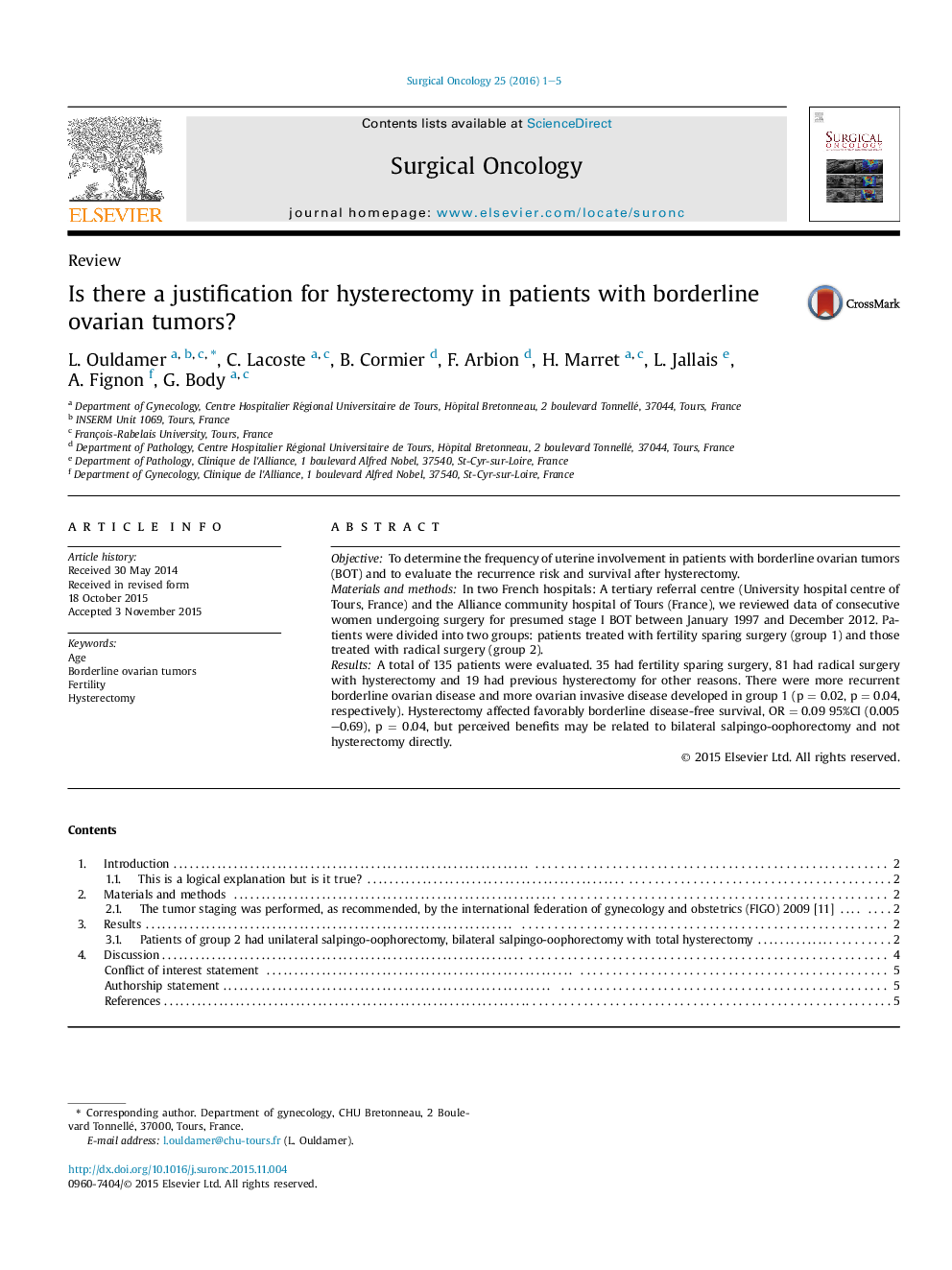| Article ID | Journal | Published Year | Pages | File Type |
|---|---|---|---|---|
| 3997694 | Surgical Oncology | 2016 | 5 Pages |
•We aimed to determine the frequency of uterine involvement in patients with BOT.•We evaluated the recurrence risk and survival after hysterectomy.•Fertility-sparing surgery was associated with more recurrent BOT.•Fertility-sparing surgery was associated with more ovarian invasive disease.•Hysterectomy affected favorably borderline disease-free survival.
ObjectiveTo determine the frequency of uterine involvement in patients with borderline ovarian tumors (BOT) and to evaluate the recurrence risk and survival after hysterectomy.Materials and methodsIn two French hospitals: A tertiary referral centre (University hospital centre of Tours, France) and the Alliance community hospital of Tours (France), we reviewed data of consecutive women undergoing surgery for presumed stage I BOT between January 1997 and December 2012. Patients were divided into two groups: patients treated with fertility sparing surgery (group 1) and those treated with radical surgery (group 2).ResultsA total of 135 patients were evaluated. 35 had fertility sparing surgery, 81 had radical surgery with hysterectomy and 19 had previous hysterectomy for other reasons. There were more recurrent borderline ovarian disease and more ovarian invasive disease developed in group 1 (p = 0.02, p = 0.04, respectively). Hysterectomy affected favorably borderline disease-free survival, OR = 0.09 95%CI (0.005–0.69), p = 0.04, but perceived benefits may be related to bilateral salpingo-oophorectomy and not hysterectomy directly.
